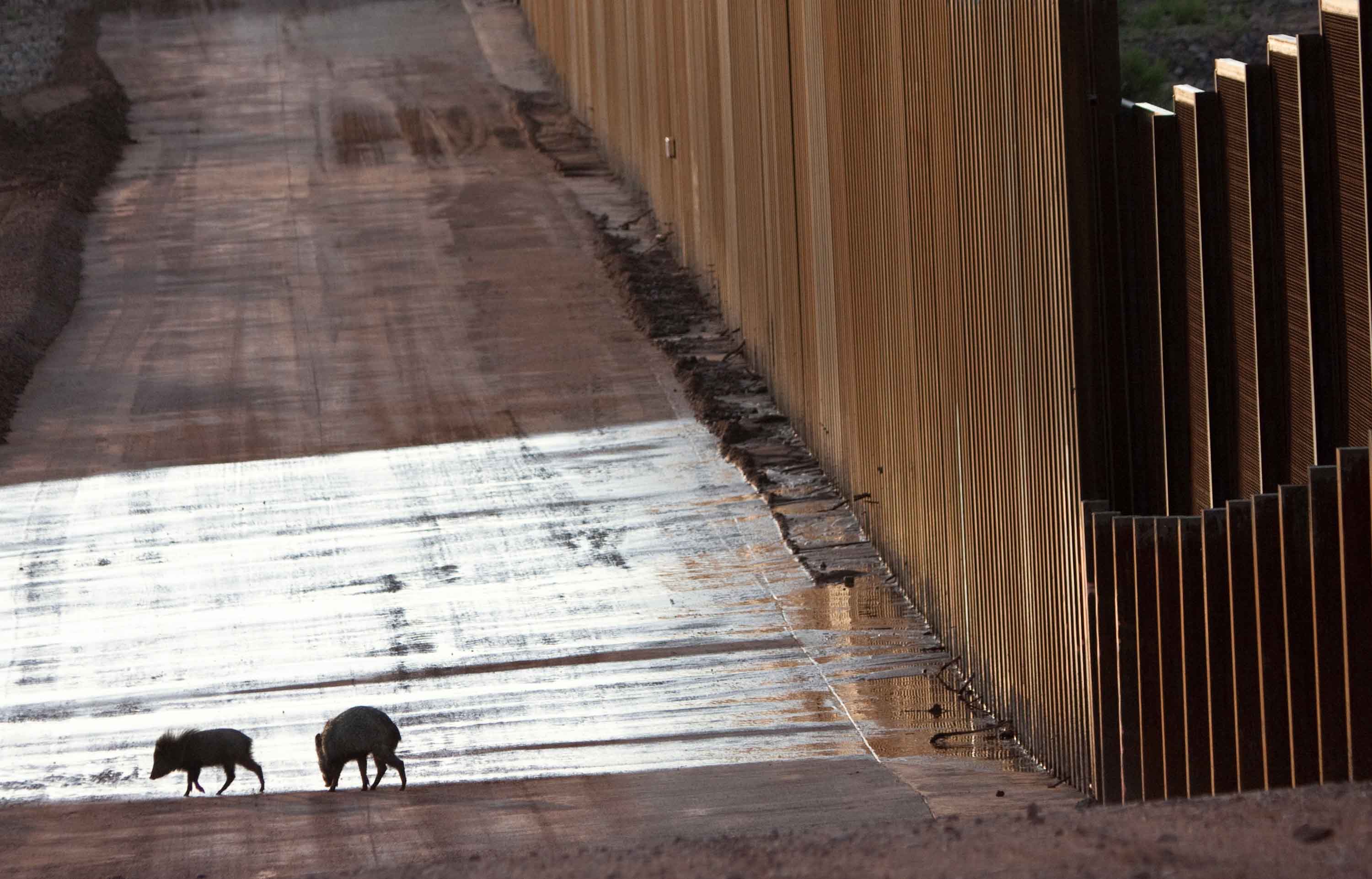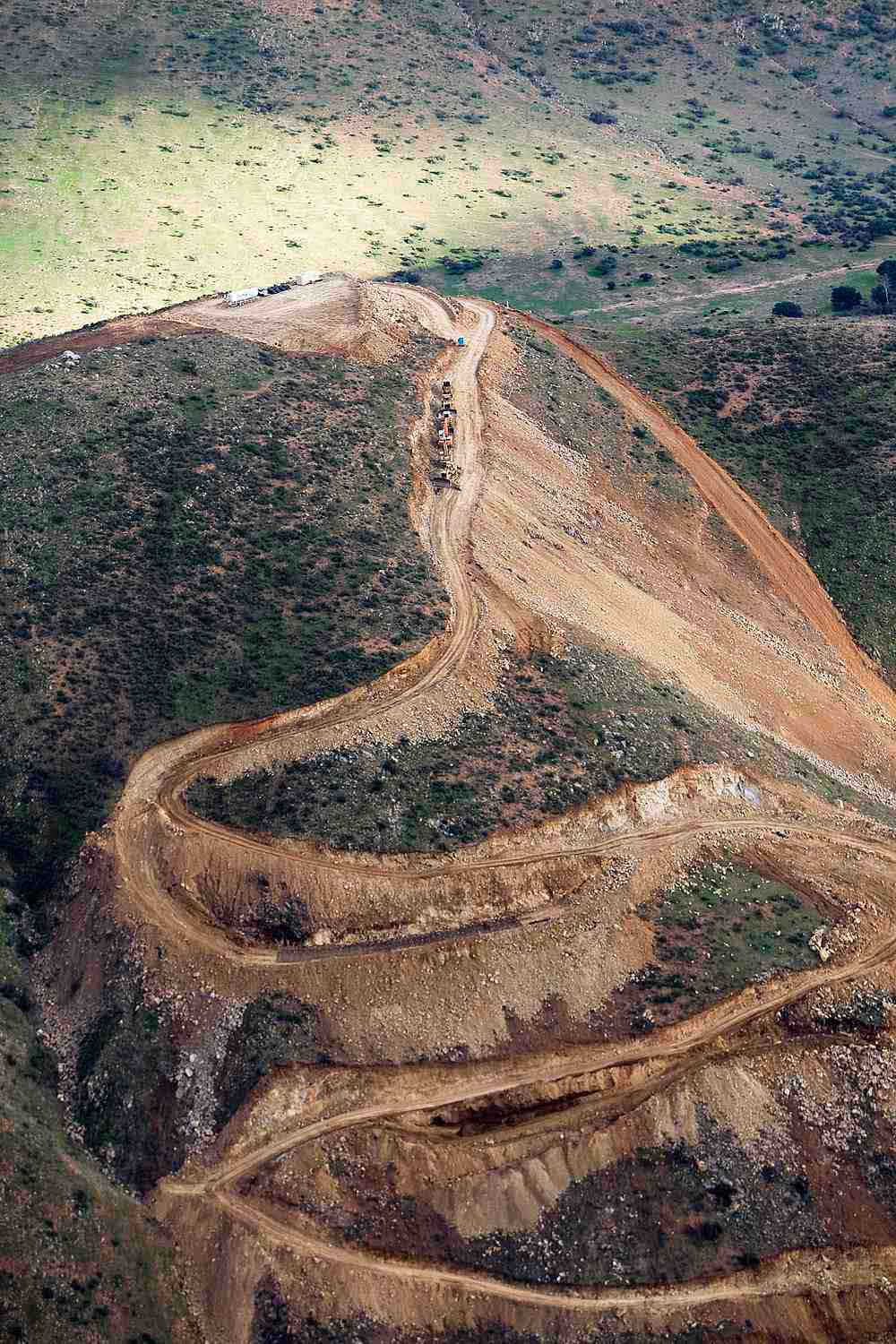by Sarah Loftus
 |
| After traveling the US-Mexico border wall for 100 yds, looking for a place to cross, these javelinas turned away. This stretch of wall in Arizona bisects the San Pedro River corridor, one of the last free flowing rivers in the state and a haven for wildlife traveling north and south. |
Legislation sponsored by Rob Bishop (R-Utah), which passed the House last summer, would grant unprecedented powers to the Department of Homeland Security (DHS) and Border Patrol to sweep away 16 major environmental laws within 100 miles of the United States/Canada border. These laws currently protect people, wildlife, and natural resources.
Recently, Wilderness Watch released a report warning that, as a result, “73 U.S. Wildernesses in 12 states covering more than 32 million acres are threatened by border security measures along the Northern Border.”
If passed by the Senate, Bishop’s legislation, also known as H.R. 1505, would expand the already excessive abilities of DHS and the Border Patrol to ignore important environmental legislation by increasing powers that were previously granted to the agencies during the Bush era. Former DHS Secretary Michael Chertoff used the 2005 REAL ID Act to forgo all public consultation, and to recklessly avoid compliance with well-established environmental laws, such as the National Historic Preservation Act, the Safe Drinking Water Act, and the Clean Air Act, during the construction of walls and infrastructure along the U.S./Mexico border.
There is concern that HR 1505 and further militarization of both borders could be included in immigration reform legislation under discussion in Congress. New York Senator Charles Schumer will be one of the bill’s authors, and therefore key to deciding whether the environment is sacrificed to make a deal.
An aerial view shows a fence/wall being built along the US/Mexico border in the Otay Mountain Wilderness. |
The DHS has unveiled a programmatic environmental impact statement for the entire northern border, which would allow them to replicate the construction of infrastructure that is already occurring along the southern border. Actions across the south have devastated fragile wild lands, divided communities, and severed essential migratory corridors for ocelots, pronghorns, jaguars, mule deer, and hundreds of other species. We can’t let this happen in the north.
In New York, H. R. 1505 would increase the vulnerability of the Niagara region, the Great Lakes, Finger Lakes National Forest, and many other fragile areas that we have fought long and hard to protect for future generations. The law also threatens the sovereignty of several American Indian nations.
Outside of New York, the White Mountain National Forest, Acadia National Park, Glacier National Park, the Boundary Waters Wilderness, Olympic National Park, and thousands of additional acres of public lands are also under threat.
National Public Radio recently referred to our southern border as an “industrial complex” that has cost billions, and Rep. Raul Grijalva (D-Arizona) points to a “mutual dependency” that’s been created between industries profiting from construction along the border and Homeland Security, stating that “that industry ... is starting to become a very, very powerful lobby up here.”
Secretary of Homeland Security Janet Napolitano previously stated that H.R. 1505 “...is unnecessary, and a bad policy.” Bishop and his followers are trying to play upon people’s fears concerning national security as a ruse to garner unnecessary, unsolicited, and unchecked powers for DHS, and to put a huge crack in the armor of our environmental protections.
Please join the Sierra Club Border Team in our efforts for smart border reform, and help stop current threats to our northern borderlands.
For more information, go to the Border Team website.
Sierran Sarah Loftus is a graduate student in the Anthropolgy Department of Syracuse University. Her e-address is sloftus@maxwell.syr.edu.
